
There is nothing better than hopping into the car and taking the road to explore new places. This time, we will embark on a road trip across the Community of Madrid that goes beyond Spain’s capital city and its most famous corners. The road trip is designed as a north-to-south itinerary, but one can also enjoy it the other way around. Whatever suits you best.
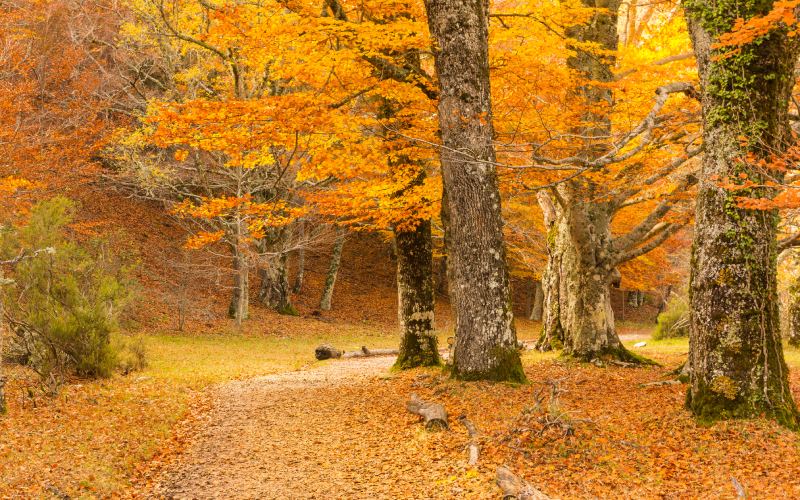
The beech forest of Montejo. | Shutterstock
The beech forest of Montejo will be the starting point of the road trip. This landscape with a thousand colours and 250 hectares lies in the mountain range of El Rincón, to the right of the river Jarama. It was declared a World Heritage Site in 2017 for its peculiar features and natural value. The access is limited to ensure the forest’s correct preservation, but it is worth doing a bit of paperwork. Besides, it is free to visit.
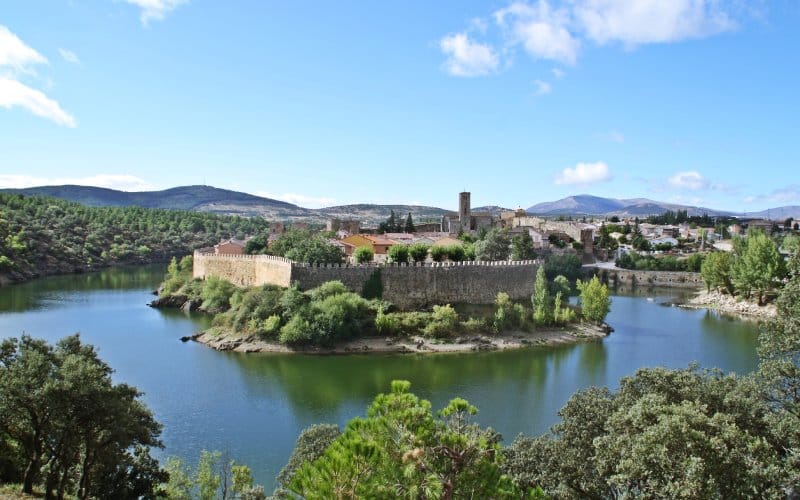
Buitrago de Lozoya. | Shutterstock
After enjoying this delightful natural space, we will head to a town that stands out for the landscape it rests on. Indeed, Buitrago de Lozoya rises over the Lozoya river, forming a peninsula that is protected by a natural moat. It is also surrounded by a wall that was built in the 11th century. Buitrago is beautiful to admire from afar, and once the visitor comes near, they will discover fascinating monuments too, like the church of Santa María del Castillo.
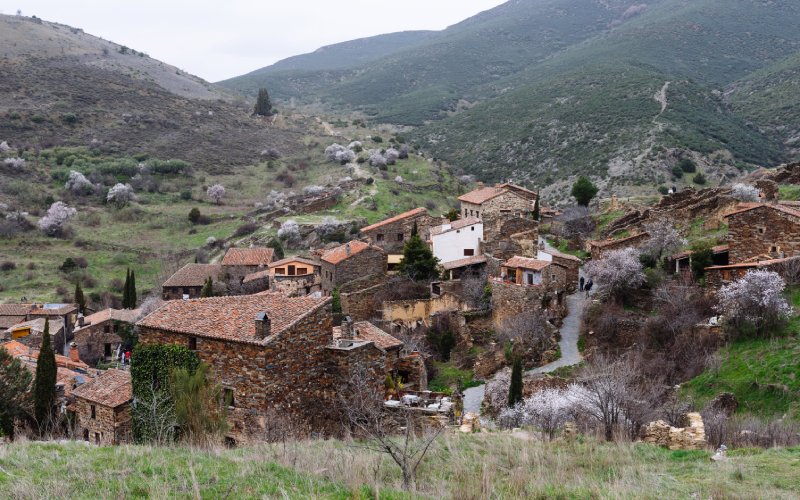
Patones de Arriba. | Shutterstock
Nevertheless, the most beautiful town in Madrid is perhaps Patones de Arriba, a small corner with slate houses hidden in Madrid’s Sierra Norte. Legend has it that, due to its isolated nature, Patones became an independent kingdom. It definitely has the elegance and peacefulness for it. Walking along its narrow streets and old houses is just lovely.

The monastery of El Paular. | Shutterstock
After visiting Patones de Arriba, we will cross the Community of Madrid from east to west. This will take approximately an hour, and will let us enjoy a nice view of the mountains of Madrid. After that, Rascafría awaits us. This place in the Lozoya Valley, in the mountain range of Guadarrama, is a great getaway destination for any time of the year.
It lies at an altitude of more than 1000 metres. Anyone who visits Rascafría should follow the course of the Artiñuelo, a tributary of the Lozoya river. The monastery of El Paular, a jewel from the 14th century, is also a must-see in the area.

El Escorial. | Shutterstock
The most prominent jewel of the northern Community of Madrid is probably El Escorial. In fact, it used to be known as the “eighth wonder of the world”. It was built under the reign of Philip II of Spain, and its construction began in 1561, ending 21 years later. Nowadays, both the monumental complex and its surroundings are open to visit. We can even see the chair where the king tracked the progress of his legacy.
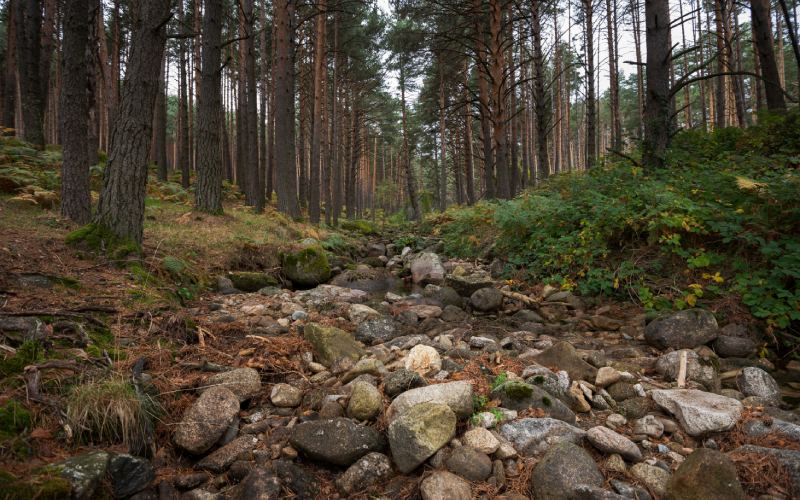
Pine forest near Manzanares El Real. | Shutterstock
This road trip across the Community of Madrid will avoid the capital city and its surroundings. Hence, it will take us south from El Escorial, crossing the natural landscape of Cuenca Alta del Manzanares. We may see on our way places inviting us to rest there and hiking routes that prompt us to walk and never stop walking.

Alcalá de Henares. | Shutterstock
If you do not, in fact, want to stop, you can pass by places like Colmenar Viejo, Tres Cantos or Alcobendas until you reach Alcalá de Henares. This is one of the few cities in Spain that have been declared a World Heritage Site, thanks to its old town, its university, which is one of the most influential institutions in Europe, and its rich cultural life. Moreover, Alcalá used to be a Roman villa, and its traces can still be tracked in places like the House of Hippolytus.
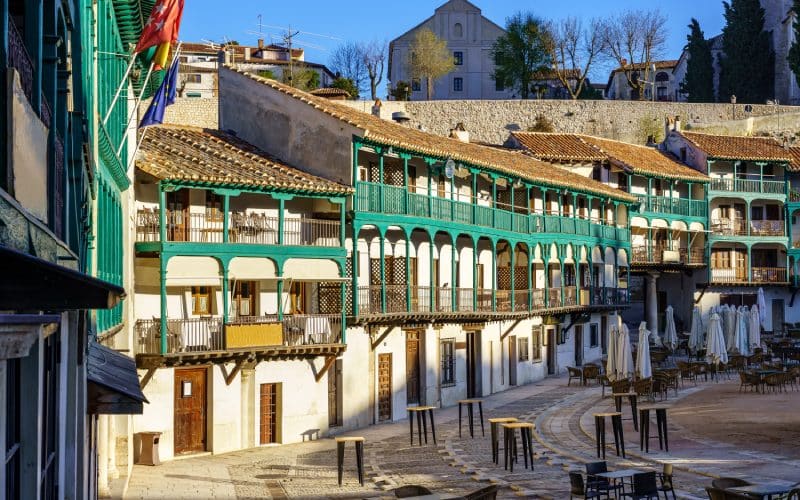
Chinchón. | Shutterstock
Another must-see when it comes to Madrid’s Villas is Chinchón. Its main square has 234 colourful balconies, and it has staged many film shootings. Its unique architecture is already widely recognised. One cannot leave Chinchón without visiting the church of Nuestra Señora de la Asunción, whose main altarpiece hosts the painting La Asunción de la Virgen by famous artist Francisco de Goya.

Colmenar de Oreja. | Shutterstock
Colmenar de Oreja has become increasingly popular among tourists lately. This is one of those places that has succeeded at keeping its historical essence. In fact, the main square of the town perfectly portrays the typical Spanish squares from past times. It is always great to let this place seduce you.
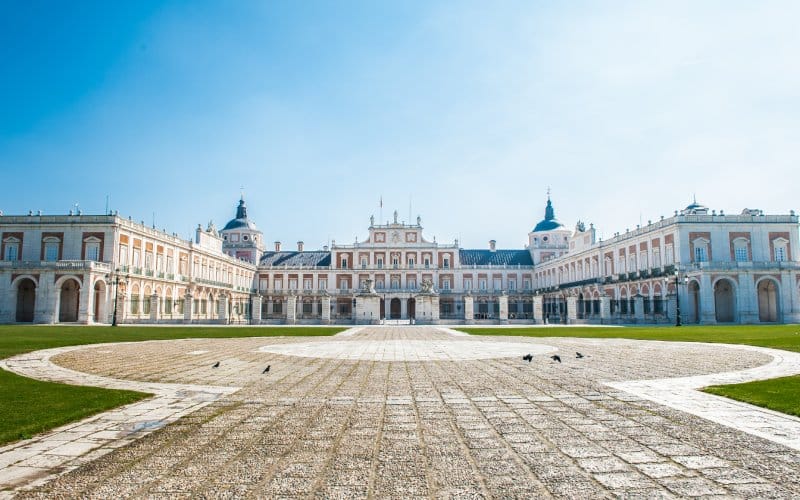
Aranjuez. | Shutterstock
This road trip in the Community of Madrid will come to an end in Aranjuez. It rests on a privileged location, where the Tajo and the Jarama rivers meet — the former being the longest river of the peninsula and, the latter, its tributary. Their banks witnessed the birth of stunning gardens, groves and forests.
The Catholic Monarchs saw the value of Aranjuez and they annexed the place to the Spanish Crown. In fact, it was the main summer residence of the Spanish royal family for a long time. In 2001, Aranjuez was declared a World Heritage Site. We cannot think of a better place to end this journey and rest for a bit surrounded by gardens and nature.